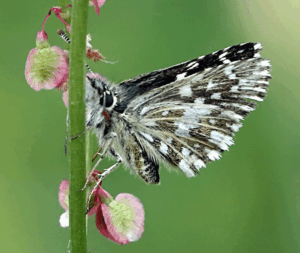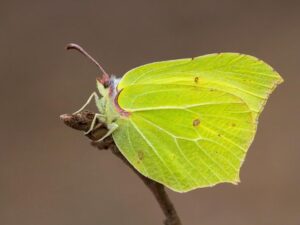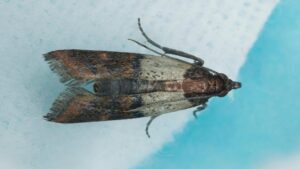Widespread throughout Britain and Ireland, commonly found in gardens. The Small Tortoiseshell is among the most well-known butterflies in Britain and Ireland. The striking and attractive patterning and its appearance at almost any time of the year in urban areas have made it a familiar species. It is one of the first butterflies to be seen in spring and in the autumn it often visits garden flowers in large numbers.The Small Tortoiseshell is one of our most widespread species and has shown little overall change in range.
Habitat
A popular garden visitor that can be found in a wide variety of habitats.This butterfly can turn up almost anywhere, from city centres to mountain tops. As such, it is one of our most successful butterflies. It is most-often seen, however, where nettles grow in abundance, such as field margins. This butterfly is often encountered while hibernating in an outbuilding, such as a garage, shed or barn, where they may be found in the company of other individuals. Other hibernation sites include hollow trees and wood piles.
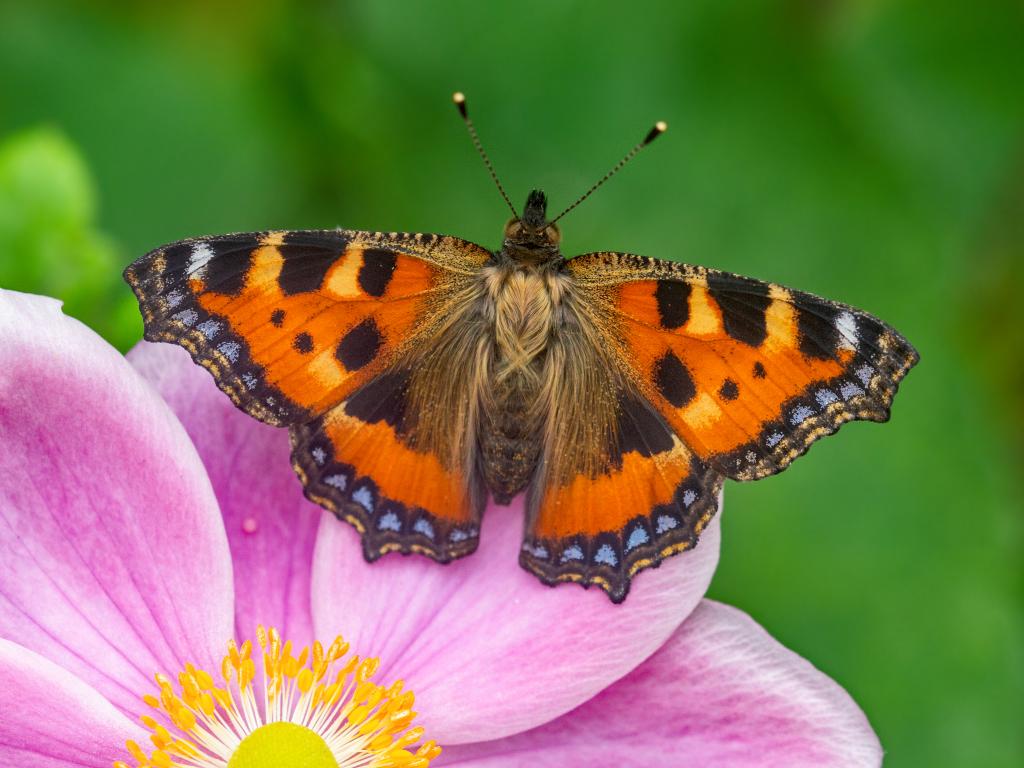
Size and Family
- Family: Nymphalids
- Size: Medium/Large
- Wing Span Range (male to female): 50-56mm
Conservation Status
- Butterfly Conservation priority: low (but concern over recent decades)
- European status: Not threatened
Caterpillar Foodplants
Common Nettle (Urtica dioica) and Small Nettle (U. urens) are used.
Life cycle
As with several nymphalid butterflies, the caterpillars feed on stinging nettles (Urtica dioica) and small nettle (Urtica urens).Humulus lupulus has also been recorded as larval food plant. Adults feed on nectar. The species has one of the longest seasons of any Eurasian butterfly, extending from early spring to late autumn. Adults overwinter in hibernation, emerging on the first warm sunny days of the year to mate and breed. In southern parts of the range there may be two broods each year, but northern insects are inhibited by long length of summer days from breeding a second time.
The small tortoiseshell is a medium-sized, pretty butterfly that is common in gardens where it feeds on buddleia and other flowers. It is on the wing throughout the year, having two or three broods and overwintering as an adult. The caterpillars feed on common nettle.
Male small tortoiseshells are very territorial, chasing each other, other butterflies and anything else that appears in their space. They court females by ‘drumming’ their antennae on the females’ hindwings.
How to identify
The small tortoiseshell is mainly reddish-orange in colour, with black and yellow markings on the forewings and a ring of blue spots around the edge of the wings. The similar painted lady is also orange with black spots, but lacks the yellow and blue markings.
Here are some key facts about the Small Tortoiseshell butterfly (Aglais urticae):Habitat:
- Found in a wide variety of habitats including gardens, meadows, woodland edges, and urban areas
- Very mobile and can be found almost anywhere, including gardens and open countryside
- Widespread throughout Britain and Ireland
Diet:
- Adults feed on nectar from a variety of flowers, especially buddleia, dandelions, thistles, and heathers
- Caterpillars feed exclusively on nettles, particularly common nettle (Urtica dioica) and small nettle (Urtica urens)
Key Facts:
- Wingspan of 45-62 mm
- Distinctive orange and black patterned wings with blue spots along the edges
- Hibernates as an adult butterfly, often in buildings like sheds and houses
- Usually has two broods per year in southern areas, one brood in northern areas
- Caterpillars are black with yellow stripes and spines
- Population has declined significantly in recent years, especially in southern Britain
- One of the first butterflies to emerge in spring
- Males are territorial and will chase away intruders
- Eggs are laid in batches on the underside of nettle leaves
The Small Tortoiseshell is a common and widespread butterfly in the UK and Europe, known for its colorful wings and tendency to visit gardens. However, its population has declined in recent decades for reasons that are not fully understood, possibly including climate change, parasites, and habitat loss.
Life Cycle
The adult butterflies can be seen at any time of the year, even on the last days of December or first days of January if the temperature is high enough to wake them from hibernation. However, adults normally emerge from hibernation at the end of March and start of April. There are typically 2 broods each year, except in the north, where there is usually only a single brood. Whether single or double-brooded, the butterfly is a familiar sight in late summer as it takes nectar to build up essential fats in preparation for hibernation.
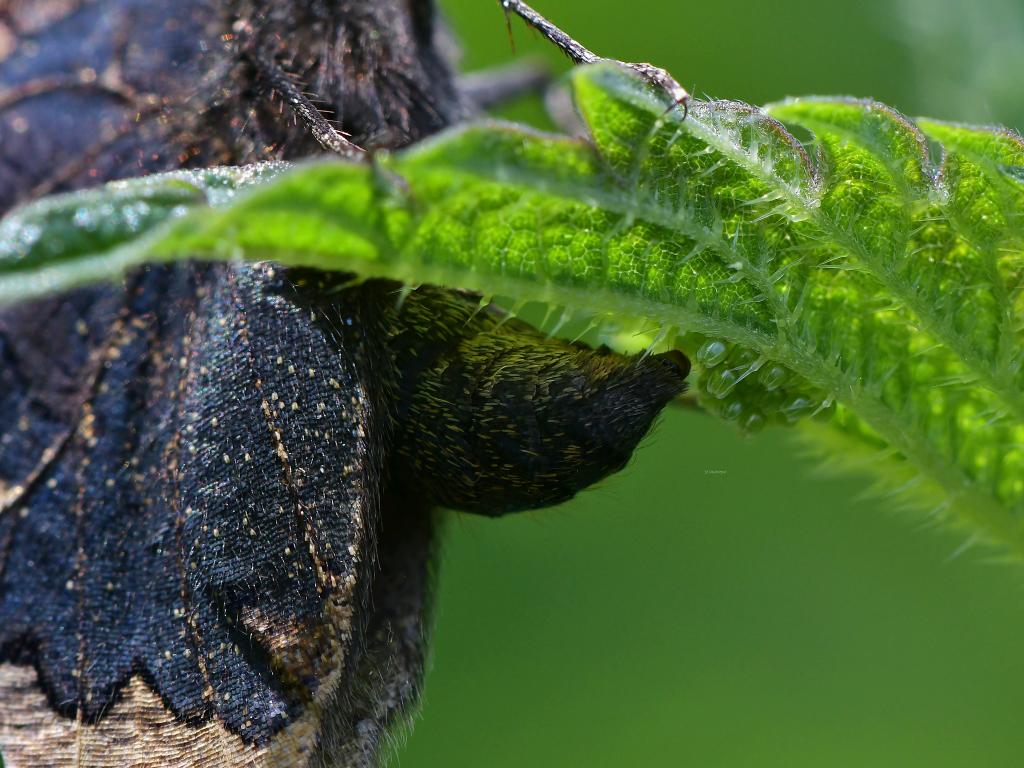
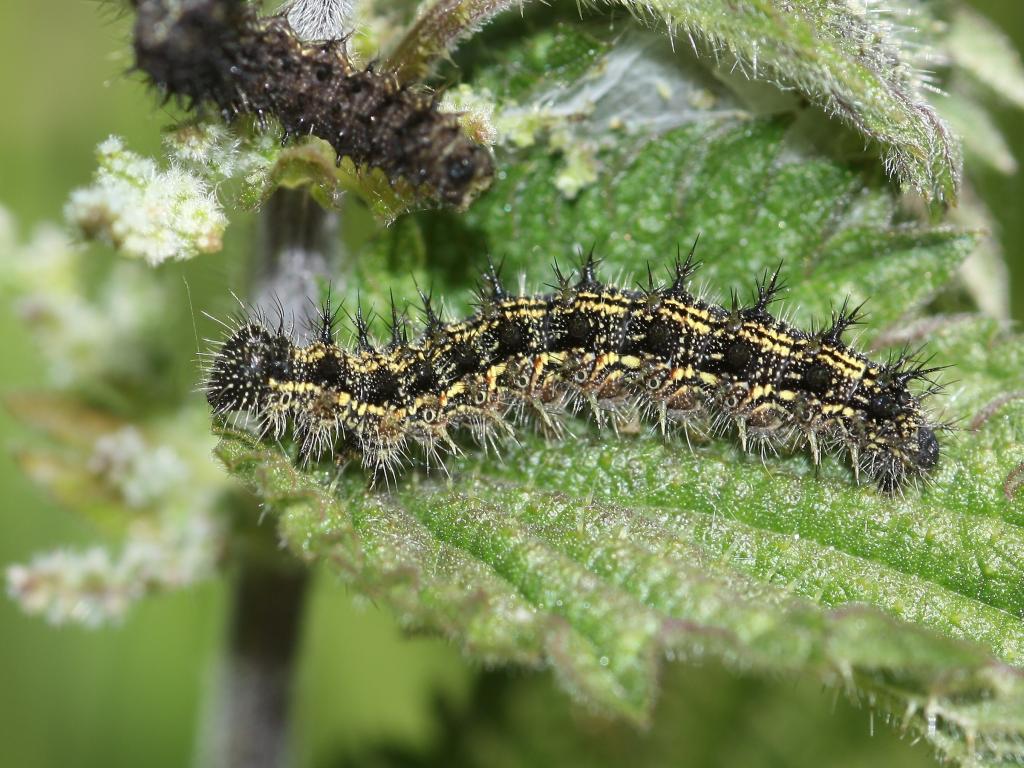
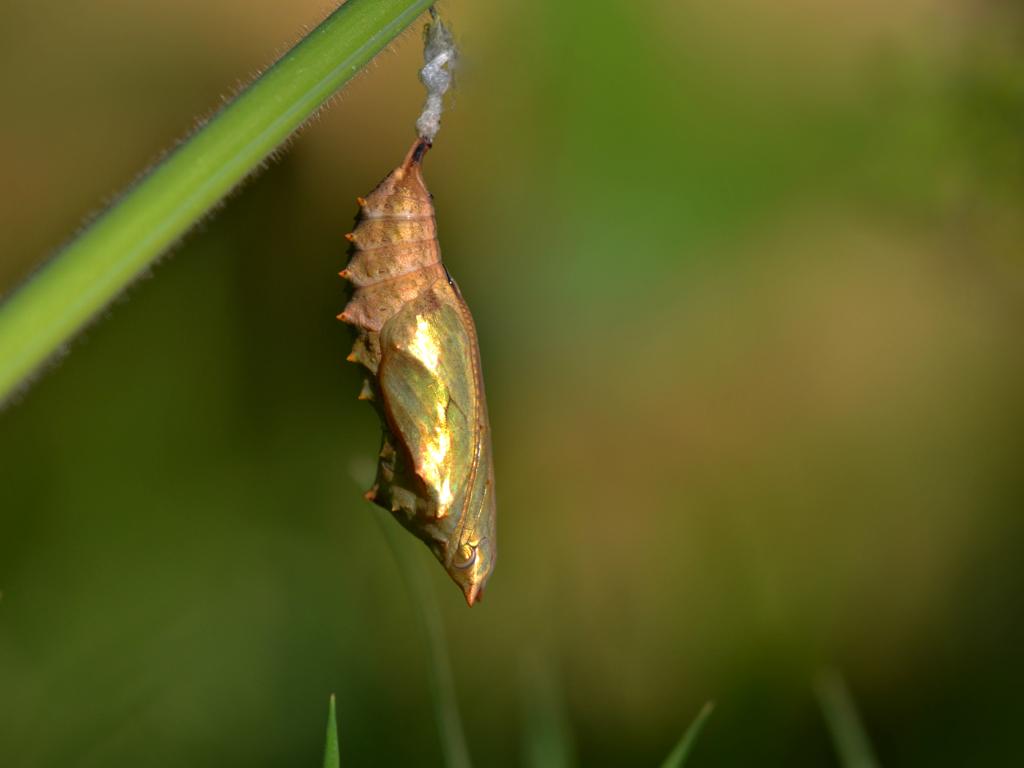
Small Tortoiseshell
This species should be recognisable to most observers, with both sexes similar in appearance. An unusual colour form (known as semi-ichnusoides) may be encountered occasionally. This forms results when an individual is exposed to high temperatures during the chrysalis stage; it’s appearance shows reduced amounts of orange and the dark spots smudged together, producing a less strongly marked and blurred effect. The camouflaged underwings are useful in concealing individuals that have begun hibernation.
The caterpillars range in colour from black to variegated yellow, with spiky growths emerging at intervals along the back. Even though this colouration deters most predators, a good number of caterpillars are lost to parasitic wasps and flies.
The daily behaviour of males, mentioned briefly above, centres around the need to nectar during the morning and to find a mate. To do this, males will set up a temporary territory, which they will defend for an hour or so. If no female has entered the territory within that time, the male will move on and try his luck elsewhere. Both sexes spend the night deep within patches of nettles and are late risers (typically on the wing from 10am).
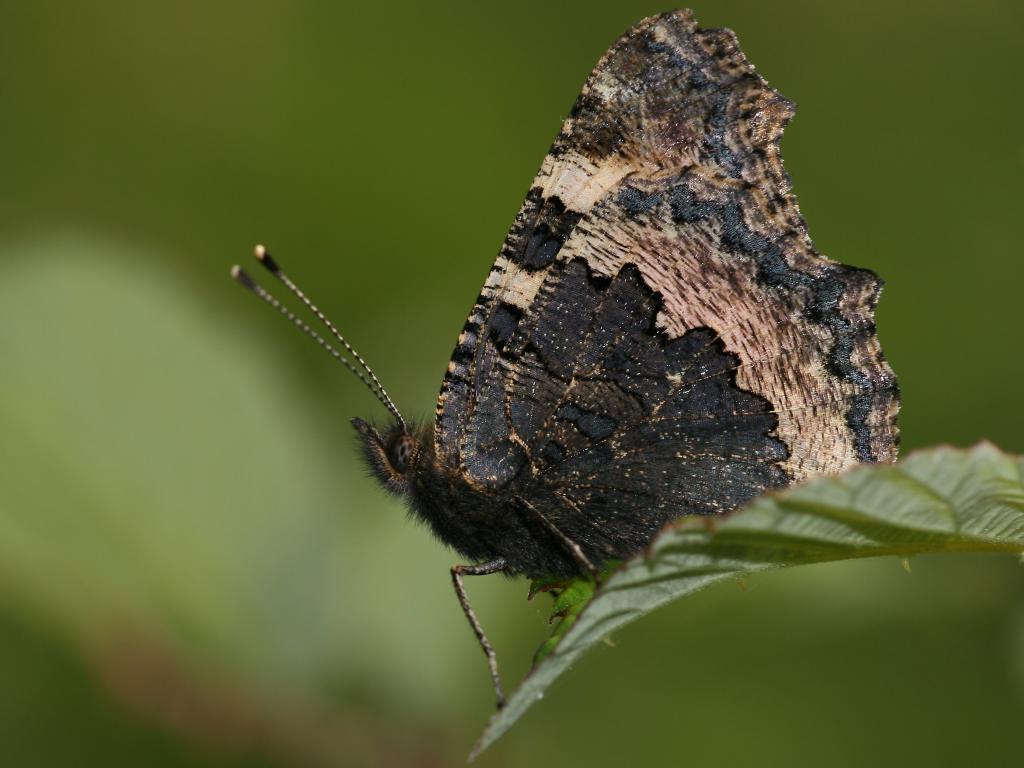
Once the weather starts to cool, Small Tortoiseshells look for somewhere warm to hibernate, which may include houses. If you find a Small Tortoiseshell, or any other butterfly species, in your house, don’t leave it there. Once the central heating turns on, it will wake up from hibernation and use up valuable food reserves. However, you should also avoid putting it outside as the cold will kill it. The ideal thing to do is to ‘rescue’ it and place it in an unheated outbuilding or shed. The temperature will remain more stable there and the butterfly should successfully hibernate until the weather becomes warmer again.
Once fertilised, the female will spend the rest of her life searching for suitable sites at which eggs can be deposited. The females lay their eggs during the afternoon, selecting patches of young nettles in sheltered but sunny locations. Both common and small nettle are used as a food plant by the caterpillars, but the females reject most clumps as being too small, too sheltered or not young enough. An ideal nettle bed is one that occupies a large part of a sunny border, and which has been cut in early June to promote tender regrowth – not exactly the sort of thing tolerated by many gardeners.
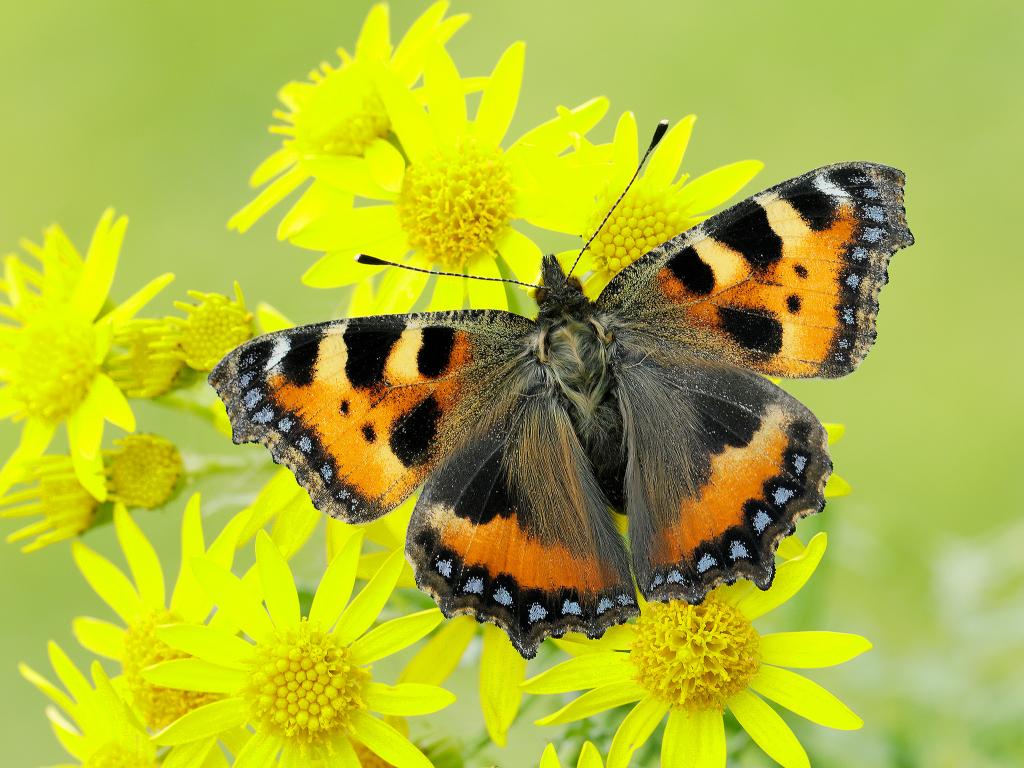
Because the eggs are laid in groups, the caterpillars are initially gregarious, living within an untidy web. When they are nearly fully-grown, they will disperse and live singly, still on nettle. This stage may last for about four weeks from egg to pupa. If you encounter a Small Tortoiseshell fluttering about in your centrally-heated house in the later part of the year, then ‘rescue’ it to an outbuilding or shed (and not outside) where the temperature will remain more stable and help secure a successful hibernation.
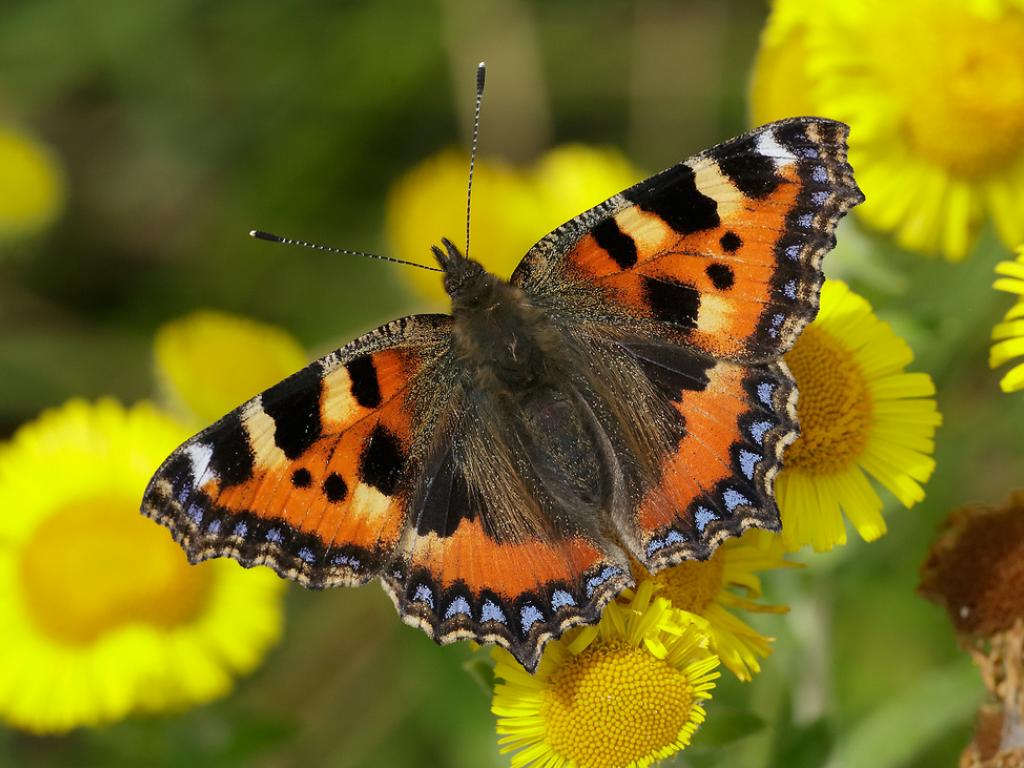
Although this species remains common and widespread, there has been a slight long-term decline in abundance over the last few decades.
What are the best flowers to attract Small Tortoiseshell butterflies to my garden
The Small Tortoiseshell is one of our most-familiar butterflies, appearing in gardens throughout the British Isles. Unfortunately, this butterfly has suffered a worrying decline, especially in the south, over the last few years. This butterfly has always fluctuated in numbers, but the cause of a recent decline is not yet known, although various theories have been proposed. One is the increasing presence of a particular parasitic fly, Sturmia bella, due to global warming – this species being common on the continent. The fly lays its eggs on leaves of the foodplant, close to where larvae are feeding. The tiny eggs are then eaten whole by the larvae and the grubs that emerge feed on the insides of their host, avoiding the vital organs. A fly grub eventually kills its host and emerges from either the fully-grown larva or pupa before itself pupating. Although the fly attacks related species, such as the Peacock and Red Admiral, it is believed that the lifecycle of the Small Tortoiseshell is better-synchronised with that of the fly and it is therefore more prone to parasitism. This is one of our most widespread butterflies, occurring throughout the British Isles, including Orkney and Shetland.
Based on the search results, here are some of the best flowers and plants to attract Small Tortoiseshell butterflies to your garden:
- Buddleia (Butterfly Bush): This is one of the most popular plants for attracting butterflies, including Small Tortoiseshells. It produces nectar-rich flowers in various colors.
- Nettles: While not a typical garden plant, nettles are crucial for Small Tortoiseshell butterflies as they are an important food source for their caterpillars.
- Lavender: This fragrant plant is attractive to many butterfly species, including Small Tortoiseshells.
- Verbena bonariensis: This tall plant with purple flowers is excellent for attracting butterflies late in the season.
- Sedum: The old-fashioned pink form of Hylotelephium spectabile (formerly known as Sedum) is particularly nectar-rich and attractive to butterflies.
- Wild marjoram (Origanum vulgare): This herb produces delicate pink flowers that are favored by butterflies.
- Valerian: This perennial plant is known to attract various butterfly species.
- Ice plant: This is mentioned as one of the plants that can attract Small Tortoiseshells.
- Native wildflowers: Plants like field scabious (Knautia arvensis) and common knapweed (Centaurea nigra) are excellent for attracting various butterfly species, including Small Tortoiseshells.
- Ivy: While not typically considered a butterfly plant, ivy provides a valuable nectar source in autumn when many other plants have finished flowering.
When planting these flowers, remember that butterflies prefer warm, sunny, and sheltered spots. It’s also beneficial to plant in groups or blocks of the same species to make it easier for butterflies to locate the flowers. Additionally, avoid using pesticides in your garden as these can harm butterflies and other beneficial insects.

